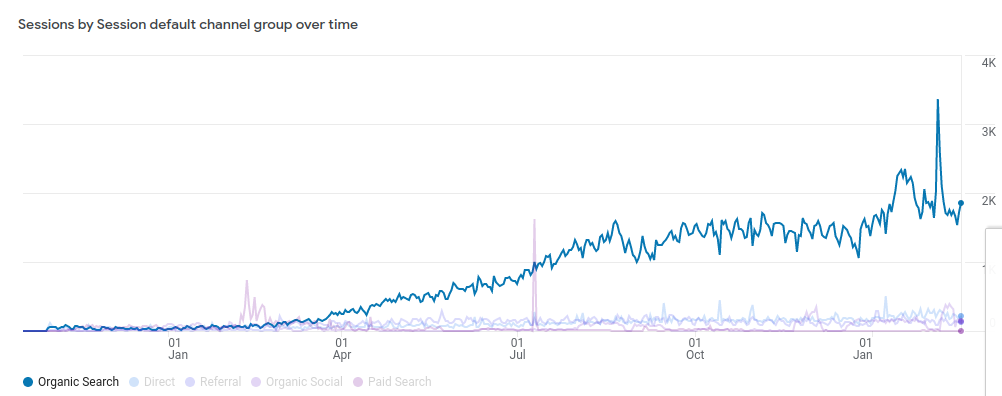Manufacturers have traditionally relied on wholesalers and distributors to get their products to market. However, in recent years, a growing number of manufacturers have been exploring the direct-to-consumer (D2C) sales model. Selling directly to consumers can help manufacturers increase revenue, build brand awareness, and gain valuable insights into customer behavior.
Understanding D2C sales is crucial for manufacturers looking to explore this business model. D2C sales involve manufacturers selling their products directly to end customers, bypassing intermediaries such as wholesalers and retailers. This approach can offer several benefits to manufacturers, including increased control over the customer experience, better margins, and the ability to collect data on customer behavior.
Key Takeaways:
- Direct-to-consumer sales can help manufacturers increase revenue and build brand awareness.
- By selling directly to consumers, manufacturers can gain valuable insights into customer behavior and improve the customer experience.
- Manufacturers exploring D2C sales should carefully strategize their approach and leverage technology to enhance logistics and delivery management.
Understanding Direct-to-Consumer Sales
Direct-to-consumer (DTC) sales is a strategy that enables manufacturers to sell their products directly to consumers without the need for intermediaries such as wholesalers, distributors, or retailers. The DTC approach is gaining popularity among manufacturers who want to have more control over their brand, pricing, and customer experience.
One of the main advantages of DTC sales is that it allows manufacturers to bypass the traditional distribution model, which can be costly and time-consuming. By selling directly to consumers, manufacturers can reduce their costs, increase their profit margins, and offer their products at more competitive prices.
Another benefit of DTC sales is that it enables manufacturers to have direct contact with their customers. This direct communication can help manufacturers understand their customers’ needs, preferences, and feedback, which can be used to improve their products and services.
To succeed in DTC sales, manufacturers need to have a clear understanding of their target audience and their needs. They also need to have a strong online presence, which includes a user-friendly website, social media channels, and online marketplaces.
Manufacturers that want to shift to DTC sales need to invest in the right technology and infrastructure to support their operations. This includes setting up an e-commerce platform, managing inventory, and shipping products directly to customers.
Overall, DTC sales can be a profitable and effective strategy for manufacturers who want to take control of their sales and customer experience. By understanding their customers’ needs and investing in the right infrastructure, manufacturers can build a successful DTC sales channel that delivers value to their customers and their business.
The Role of Manufacturers in D2C
Manufacturers play a significant role in the direct-to-consumer (D2C) model. They are responsible for creating and producing the products that are sold directly to the end customer. In this section, we’ll explore the key aspects of a manufacturer’s role in D2C, including product design and configuration, production, and inventory management.
Product Design and Configuration
Product design and configuration are critical components of a manufacturer’s role in D2C. Manufacturers must create products that meet the needs and preferences of their target customers. This requires a deep understanding of the customer base and the ability to design products that are both functional and visually appealing.
In addition to product design, manufacturers must also consider product configuration. This involves determining the different variations and options that will be offered to customers. For example, a clothing manufacturer may offer different sizes, colors, and styles of a particular garment. Manufacturers must also consider any customization options that may be offered to customers.
Production and Inventory Management
Once the product design and configuration have been established, manufacturers must focus on production and inventory management. They must ensure that they have the necessary resources and processes in place to produce products efficiently and effectively.
Production management involves overseeing the manufacturing process, including sourcing raw materials, managing production schedules, and ensuring quality control. Manufacturers must also consider the cost of production and determine the most efficient way to produce their products.
Inventory management is another critical aspect of a manufacturer’s role in D2C. Manufacturers must ensure that they have the necessary inventory levels to meet customer demand. They must also consider the cost of holding inventory and determine the most efficient way to manage their inventory levels.
In conclusion, manufacturers play a critical role in the D2C model. They are responsible for creating and producing products that meet the needs and preferences of their target customers. Manufacturers must also focus on production and inventory management to ensure that they can meet customer demand efficiently and effectively.
Strategizing D2C Sales
When it comes to selling directly to consumers, manufacturers need to have a solid strategy in place to ensure success. This section will cover some key aspects of strategizing D2C sales, including marketing strategy, distribution channels, pricing, and profit margin.
Marketing Strategy
Marketing is crucial for any D2C sales strategy. Manufacturers need to create a strong brand identity and communicate it effectively to their target audience. This can be done through various channels, including social media, email marketing, influencer marketing, and more.
One effective marketing strategy for D2C sales is to focus on the unique benefits of the product. Manufacturers can highlight the quality, durability, and other features that set their product apart from competitors. They can also leverage customer reviews and testimonials to build trust and credibility with potential buyers.
Distribution Channels
When selling directly to consumers, manufacturers have more control over their distribution channels. They can choose to sell through their own website, third-party marketplaces, or a combination of both.
Selling through their own website allows manufacturers to have complete control over the customer experience, from product information to checkout. However, it also requires more investment in website development, marketing, and customer support.
Third-party marketplaces, on the other hand, offer a wider audience and lower overhead costs. Manufacturers can leverage the existing customer base of marketplaces like Amazon and eBay to drive sales. However, they also have less control over the customer experience and may face more competition from other sellers.
Pricing and Profit Margin
One of the biggest advantages of D2C sales is the ability to set and control pricing. Manufacturers can set their own prices without having to worry about retailer markups or price negotiations.
When setting prices, manufacturers should consider their profit margin and the manufacturer’s suggested retail price (MSRP). They should also research the market to ensure their prices are competitive and attractive to potential buyers.
To maintain a healthy profit margin, manufacturers should also consider their production and fulfillment costs. They can optimize their supply chain and logistics to reduce costs and increase efficiency.
Overall, manufacturers can benefit greatly from selling directly to consumers, but they need to have a solid strategy in place. By focusing on marketing strategy, distribution channels, pricing, and profit margin, they can maximize their sales and grow their business.
Leveraging Technology for D2C
Manufacturers looking to sell directly to consumers can benefit greatly from leveraging technology to streamline their operations and reach a wider audience. In this section, we’ll explore some of the key ways manufacturers can use technology to succeed in D2C.
Ecommerce Platforms
One of the most important aspects of D2C is having a robust ecommerce platform that allows customers to easily browse and purchase products. Manufacturers can choose from a variety of ecommerce platforms, including Shopify, WooCommerce, and Magento, to name a few. These platforms offer a range of features, such as customizable themes, payment processing, and inventory management, that can help manufacturers set up a professional-looking online store quickly and easily.
Digital Marketing
Digital marketing is another critical component of D2C success, as it allows manufacturers to reach potential customers through a variety of channels, including social media, email marketing, and search engine optimization (SEO). By leveraging these channels, manufacturers can build brand awareness, drive traffic to their ecommerce site, and ultimately boost sales. To make the most of digital marketing, manufacturers should consider partnering with a digital marketing agency or hiring an in-house marketing team.
Data Management
To succeed in D2C, manufacturers must also be able to effectively manage customer data. This includes collecting and analyzing data on customer behavior, preferences, and purchase history, as well as using this data to inform marketing and product development decisions. To manage this data effectively, manufacturers can use a variety of tools, including customer relationship management (CRM) software, data analytics platforms, and marketing automation software.
Overall, leveraging technology is essential for manufacturers looking to succeed in D2C. By using ecommerce platforms, digital marketing, and data management tools effectively, manufacturers can streamline their operations, reach a wider audience, and ultimately boost sales.
Enhancing Customer Experience in D2C
When manufacturers sell directly to consumers, they have the opportunity to build a strong relationship with their customers. Enhancing customer experience is crucial for manufacturers to succeed in the direct-to-consumer market. In this section, we will discuss some strategies to improve customer experience in D2C.
Building Trust and Relationship
Building trust and a strong relationship with customers is key to success in D2C. Manufacturers should focus on creating a positive and memorable experience for their customers. This can be achieved by providing high-quality products, excellent customer service, and personalized promotions.
Manufacturers can build trust with customers by being transparent about their products and business practices. They should provide detailed information about their products, including ingredients, materials, and manufacturing processes. Manufacturers should also be responsive to customer feedback and concerns.
Customer Service and Support
Customer service and support is another important aspect of enhancing customer experience in D2C. Manufacturers should provide excellent customer service and support to their customers. This can be achieved by offering multiple channels for customers to contact the manufacturer, including email, phone, and chat.
Manufacturers should also provide clear and concise information about their products and services. This includes information about shipping, returns, and refunds. Manufacturers should be responsive to customer inquiries and concerns, and provide timely and accurate solutions to customer issues.
Personalized Promotions
Personalized promotions are another strategy for enhancing customer experience in D2C. Manufacturers can use customer data to create personalized promotions that are tailored to each customer’s preferences and needs. This can include personalized product recommendations, special offers, and discounts.
Manufacturers can also use customer data to improve their products and services. By analyzing customer feedback and purchase history, manufacturers can identify areas for improvement and make changes to their products and services to better meet customer needs.
In summary, enhancing customer experience is crucial for manufacturers to succeed in D2C. Building trust and a strong relationship with customers, providing excellent customer service and support, and offering personalized promotions are all strategies that manufacturers can use to improve customer experience in D2C.
Logistics and Delivery Management
When selling directly to consumers, manufacturers must have a reliable logistics and delivery management system in place to ensure timely and efficient delivery of their products. This is especially important as customers expect fast and reliable delivery, and delays or errors can lead to negative reviews and loss of business.
One of the key considerations for manufacturers is choosing the right shipping carrier. Factors to consider include shipping rates, delivery speed, tracking capabilities, and customer service. It is important to compare different carriers and negotiate rates to find the best fit for the business.
Another important aspect of logistics and delivery management is inventory management. Manufacturers must ensure that they have enough stock to meet demand, while also avoiding overstocking and excess inventory. This requires accurate forecasting and planning, as well as efficient warehousing and inventory management processes.
To streamline delivery and reduce costs, manufacturers can also consider using third-party logistics providers (3PLs) or fulfillment centers. These providers can handle warehousing, order fulfillment, and shipping, allowing manufacturers to focus on production and product development.
In addition to these considerations, manufacturers must also ensure that they have a clear and efficient returns management process in place. This includes providing clear instructions for returns, tracking returns, and processing refunds or exchanges in a timely manner.
Overall, effective logistics and delivery management is essential for manufacturers selling directly to consumers. By choosing the right shipping carrier, managing inventory effectively, and considering third-party logistics providers, manufacturers can ensure that their products are delivered quickly and efficiently, improving customer satisfaction and driving sales.
Dealing with Competition and Challenges
Manufacturers who sell directly to consumers face several challenges and stiff competition. This section will discuss some of the most significant challenges and how manufacturers can overcome them.
B2B Vs D2C
Manufacturers who have traditionally sold to businesses (B2B) may find it challenging to switch to selling directly to consumers (D2C). D2C sales require a different approach and skillset than B2B sales. Manufacturers must learn how to market their products directly to consumers, manage individual customer relationships, and handle logistics, which can be a significant shift from their established B2B sales model.
Existing Relationships
Manufacturers who sell directly to consumers may face challenges in managing their existing relationships with distributors and retailers. These relationships are crucial to the success of many manufacturers, and they must find a way to balance their D2C sales with their existing relationships. Manufacturers must also consider how their D2C sales may impact their existing pricing strategies and how they can continue to offer competitive pricing to their partners.
Laws
Manufacturers who sell directly to consumers must also navigate various laws and regulations that govern D2C sales. These laws include consumer protection laws, privacy laws, and data protection laws. Manufacturers must ensure that they comply with these laws to avoid legal issues and protect their customers’ privacy and data.
In summary, manufacturers who sell directly to consumers face several challenges, including competition from established D2C brands, managing existing relationships, and navigating various laws and regulations. However, with the right approach and strategy, manufacturers can overcome these challenges and succeed in the D2C market.
Case Study: Car Manufacturers Going D2C
Car manufacturers are increasingly shifting to direct-to-consumer (D2C) sales models to improve their profitability. This shift has been fueled by the need to improve efficiency, cut costs, and maintain control over the customer experience.
According to a report by BCG, the shift to D2C sales allows car manufacturers to realize higher price points since dealerships must adhere to the MSRP and can no longer undercut one another. Additionally, sales costs are lower in online channels than through dealerships. This means that car manufacturers can offer better prices to consumers while still maintaining their profit margins.
For example, Tesla has been successful in selling cars directly to consumers, bypassing the traditional dealership model. This has enabled Tesla to maintain control over the customer experience, from marketing to sales to service. Tesla’s D2C model has also allowed the company to cut costs by eliminating the need for dealerships and reducing the number of intermediaries involved in the sales process.
Other car manufacturers, such as Ford and General Motors, have also started to explore D2C sales models. In 2020, Ford launched a pilot program in which it sold its Mustang Mach-E electric SUVs directly to consumers in three cities. The program was a success, and Ford plans to expand its D2C sales model to other cities in the future.
In addition to improving profitability, D2C sales models also allow car manufacturers to collect valuable customer data that can be used to improve their products and services. This data can help manufacturers identify consumer preferences, pain points, and areas for improvement.
As Forbes notes, car manufacturers that want to shift to a D2C sales model must be prepared to invest in technology, logistics, and customer service. They must also be willing to take on the risks associated with direct sales, such as inventory management and warranty claims.
Overall, the shift to D2C sales models is a promising trend for car manufacturers looking to improve their profitability and maintain control over the customer experience. By investing in technology, logistics, and customer service, manufacturers can successfully transition to a D2C sales model and reap the benefits of increased efficiency, lower costs, and valuable customer data.
Conclusion
In conclusion, manufacturers can benefit greatly from selling directly to consumers. By cutting out the middleman, they can have better control over pricing, inventory levels, and customer experience. This can lead to increased revenue and brand awareness.
However, it’s important for manufacturers to carefully consider the investment required to launch a direct-to-consumer strategy. They must be prepared to invest in marketing, logistics, and customer service to ensure a successful launch.
Manufacturers must also be aware of the potential challenges they may face when selling directly to consumers. They must be prepared to handle customer complaints and returns, and to manage their inventory levels effectively.
Overall, with the right strategy and investment, manufacturers can reap the benefits of selling directly to consumers. They can increase their revenue, build brand awareness, and improve their customer experience.
Frequently Asked Questions
What are some examples of companies that sell directly to consumers without going through retailers? Several companies have successfully established a direct-to-consumer sales channel. Some examples include:
Warby Parker: an eyewear company that sells prescription glasses and sunglasses directly to consumers through their website and physical stores.
Casper: a mattress company that sells mattresses, pillows, and bedding directly to consumers through their website and physical stores.
Dollar Shave Club: a subscription-based shaving company that sells razors, shaving cream, and other grooming products directly to consumers through their website.
How can manufacturers establish a direct-to-consumer sales channel? Manufacturers can establish a direct-to-consumer sales channel by creating an online store or website where customers can purchase products directly from the manufacturer. The manufacturer can also open physical stores or pop-up shops to sell products directly to consumers. Additionally, manufacturers can partner with third-party logistics providers to handle shipping and fulfillment for their direct-to-consumer sales.
What are the benefits for manufacturers to sell directly to consumers? Selling directly to consumers can provide several benefits for manufacturers, including:
Increased control over the customer experience and brand messaging.
Access to valuable customer data and insights.
Higher profit margins by cutting out the middleman and avoiding retailer markups.
Flexibility to test new products and marketing strategies.
Are there any challenges that manufacturers face when selling directly to consumers? Yes, there are several challenges that manufacturers may face when selling directly to consumers, including:
High initial costs to establish a direct-to-consumer sales channel.
The need to develop and maintain a strong online presence and marketing strategy.
Increased competition from other direct-to-consumer brands and traditional retailers.
The need to manage shipping and fulfillment logistics.
What are some successful strategies for manufacturers to sell directly to consumers? Some successful strategies for manufacturers to sell directly to consumers include:
Offering exclusive products or limited edition releases to generate buzz and demand.
Providing personalized experiences and recommendations based on customer data and preferences.
Creating engaging content and social media campaigns to build brand awareness and loyalty.
Offering free shipping, easy returns, and other incentives to encourage customers to make a purchase.
How can manufacturers ensure a positive customer experience when selling directly to consumers? Manufacturers can ensure a positive customer experience by:
Providing clear and accurate product descriptions and images.
Offering responsive customer service and support.
Providing fast and reliable shipping and delivery options.
Offering easy returns and exchanges.
Soliciting and responding to customer feedback and reviews.







